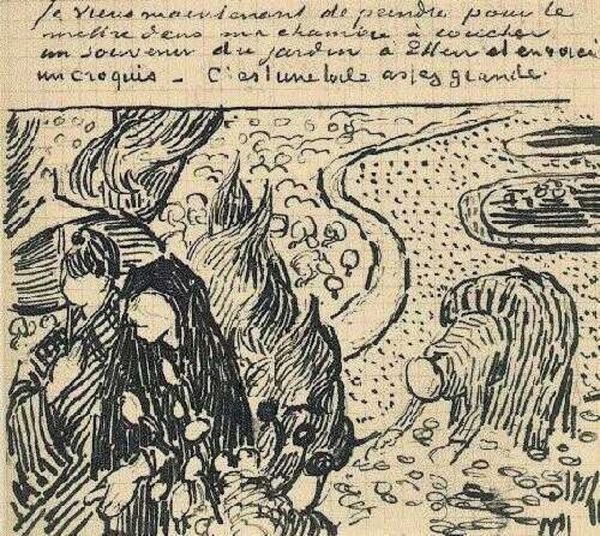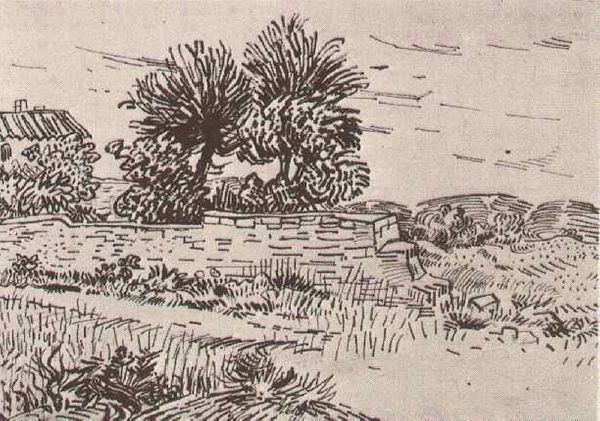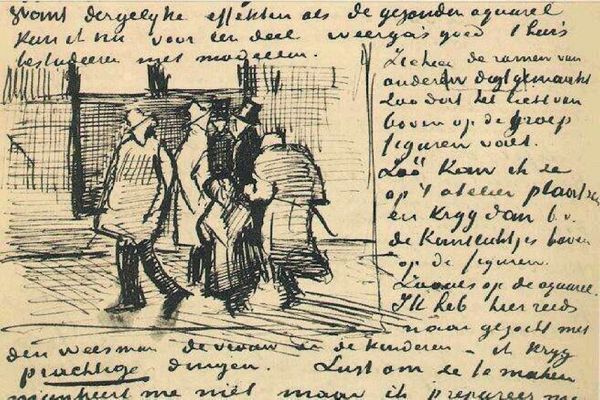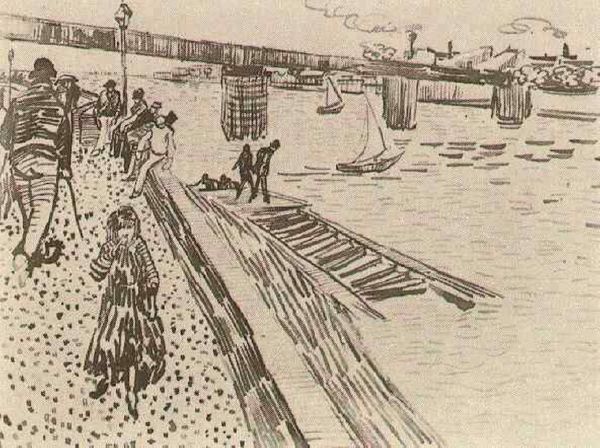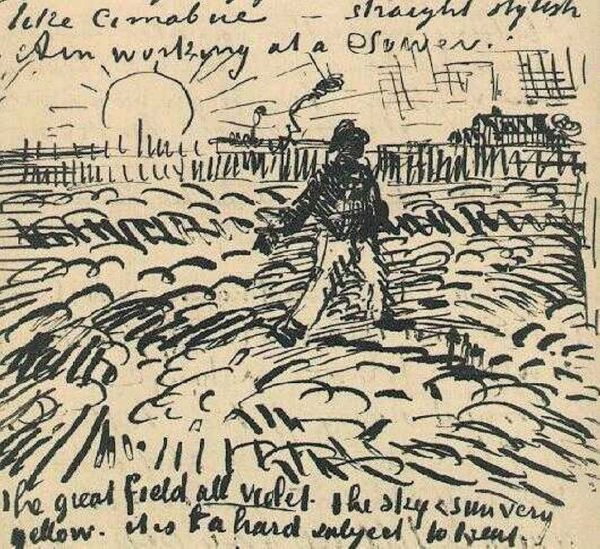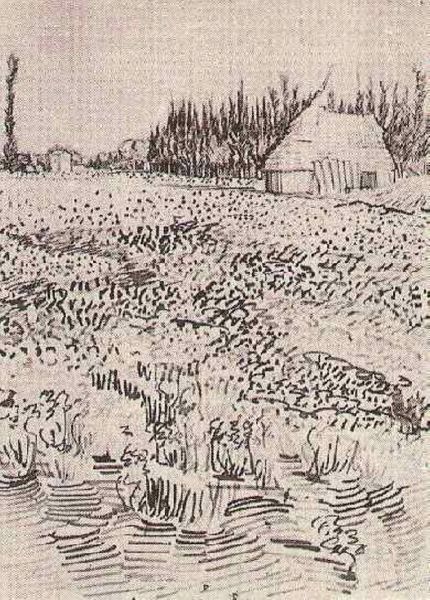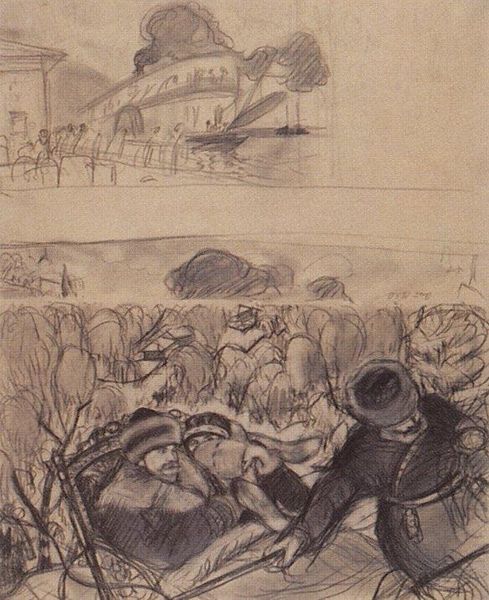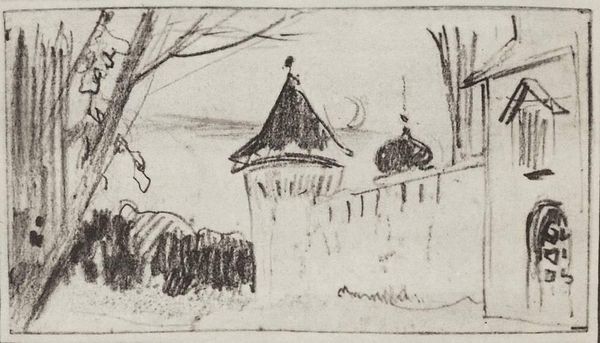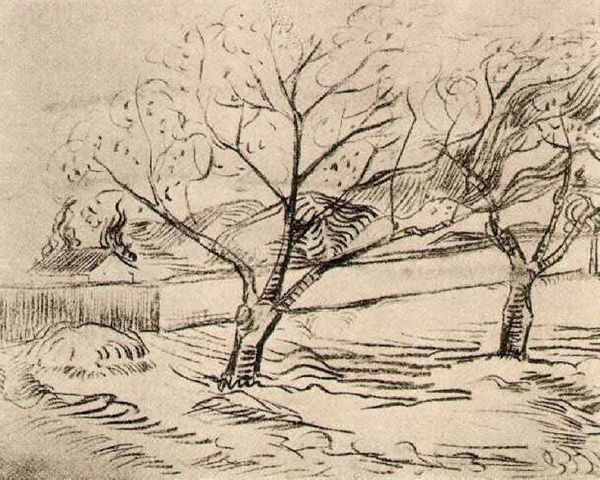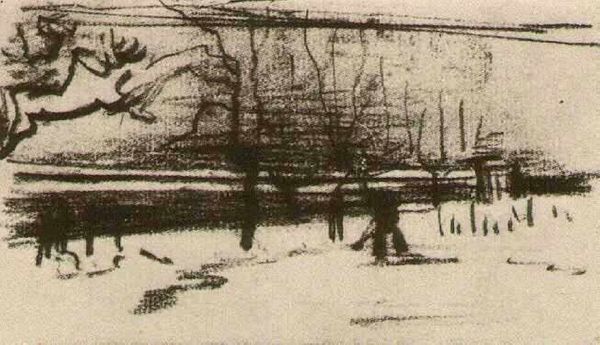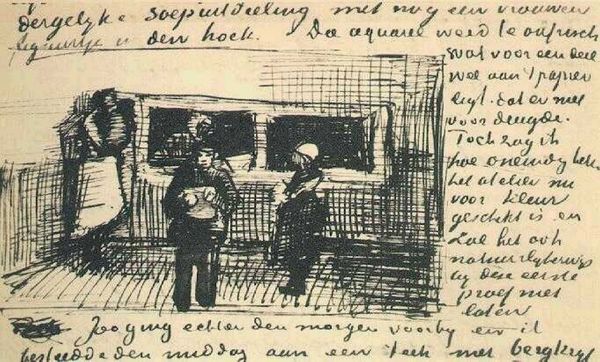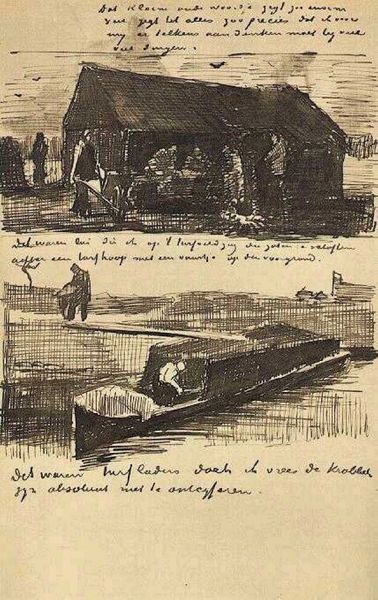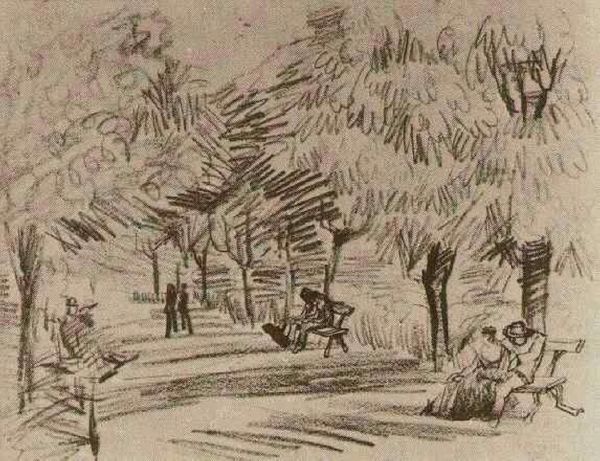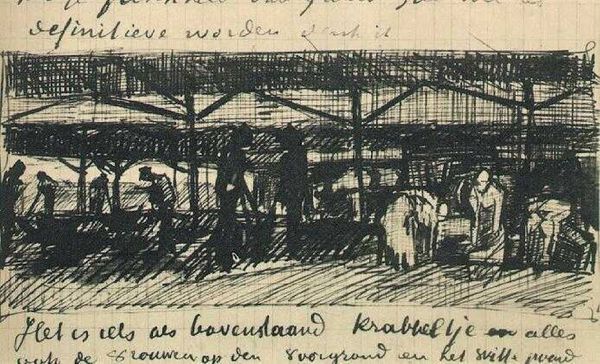
drawing, ink, pencil
#
pen and ink
#
drawing
#
mechanical pen drawing
#
impressionism
#
pen sketch
#
vehicle
#
hand drawn type
#
landscape
#
figuration
#
personal sketchbook
#
linework heavy
#
ink
#
sketchwork
#
pen-ink sketch
#
pencil
#
line
#
pen work
#
cityscape
#
post-impressionism
#
initial sketch
Copyright: Public domain
Editor: This is Van Gogh's "Drawbridge with Walking Couple," from 1888. It's a pen and ink drawing, very linear and kind of scratchy, even. The materials seem so immediate, like he just grabbed a pen and paper. What stands out to you? Curator: The immediacy is key. Look at the labor involved, the sheer quantity of lines. He's not obscuring the process; he's highlighting the physical act of making. How does this relate to the subjects he's depicting - the drawbridge, the figures, the landscape of Arles? These are elements of the working world. Editor: I guess I never thought about drawing as "labor" in the same way as, say, building a bridge. Curator: Exactly! Van Gogh is blurring those lines. Think about the social context – the rise of industrialization and how artists were responding to that. What do you think of the hand-written text we see scrawled over the image? Editor: I noticed that too! It almost feels like the drawing is a letter...or part of one? Like, the means of producing art are completely integrated with daily communication. It really challenges the traditional divide between art and the rest of life. Curator: Precisely. He's using inexpensive materials – paper, pen, ink – and integrating text, rejecting notions of art as precious and rarified. Instead, he emphasizes process and the handmade within the framework of industry. It raises questions about who gets to create art and for what purpose. Editor: That’s so interesting. I had always focused on the emotional impact of his work, but thinking about the material and production adds a whole new dimension. Thanks! Curator: Indeed, by exploring the materiality and the circumstances of artistic production we see how Van Gogh challenges traditional hierarchies.
Comments
No comments
Be the first to comment and join the conversation on the ultimate creative platform.
